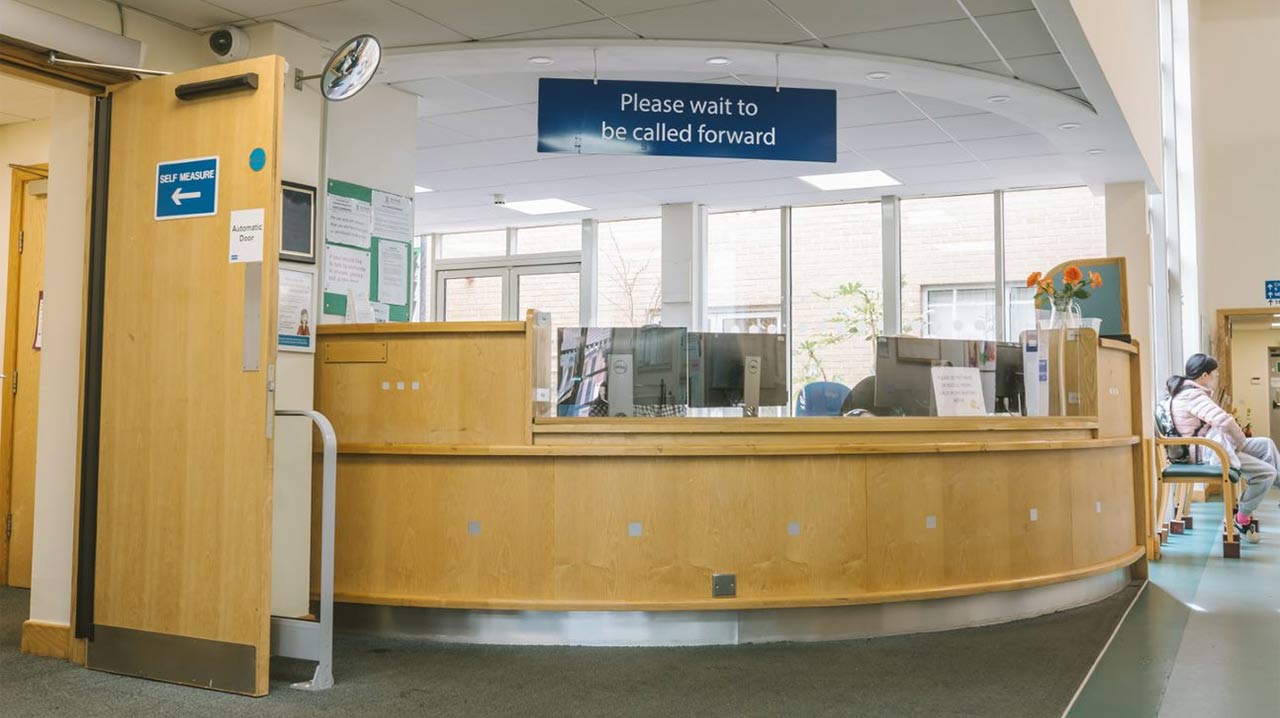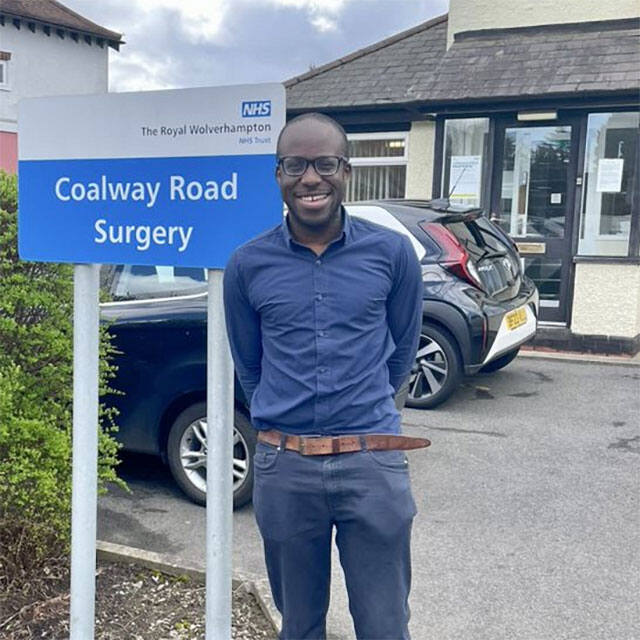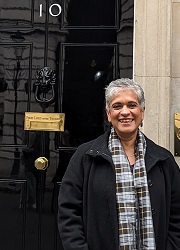Important IT system upgrade
From Friday 12 December
We’re carrying out an important upgrade to our systems to improve the services we provide to our members. This means that access to online systems and contact points, including MyRCGP and the member helpdesk, will be temporarily unavailable from 16:00 on Friday 12 December, with a gradual restoration of services from Monday 15 December.

The partnership model of general practice has come under intense scrutiny of late, with politicians on both sides indicating they may have other plans for general practice
Early last year, the then Health Secretary Sajid Javid was said to be considering plans to “nationalise” GPs through a system in which they could be employed by hospitals.
Then, Shadow Health Secretary Wes Streeting told The Times that the NHS needs “fundamental change”, including a “complete rethink” of what primary care looks like. To achieve this, he proposed tearing up the GP contract and said he was “minded to phase out” the system of GP partners completely in favour of a salaried model.
The politicians’ comments attracted a strong reaction, both from those who believed them to be inflammatory at a time when GPs are delivering the highest ever number of appointments, and those who say the current system puts too much pressure on partners who are voting with their feet.
The College believes partnership is crucial for diversity in general practice, and the so-called 'reform' proposals don't address the underlying problems of historic underfunding and poor workforce problems.
RCGP Chair Professor Kamila Hawthorne, said it delivers exceptional benefits for the NHS allowing GP teams to innovate and tailor care and services to their local populations.
“The partnership model of general practice is extremely good value for money for the NHS because it relies on the goodwill of GP partners going above and beyond, and a recent independent review of the partnership model found it to be a viable one when resourced appropriately,” she said.
She added that some of the alternative suggestions – including health centres with different healthcare professionals to ensure patients receive the most appropriate care – are already happening.
The solution may lie of course in a mix of (well-funded and staffed) provision and Professor Hawthorne said the College was “not averse to other models of general practice working alongside the partnership model if they work well for patients and GPs”.
It is certainly the case that the profession is seeing an exodus of senior partners. A survey by Pulse last year found 40% were considering switching to a salaried role.
There are 16,563 GP partners (full-time equivalent) in England compared with almost 20,000 five years ago. The impact of the pandemic also appears to be notable, with 18,250 partners when Covid-19 first made its appearance.
In Wales GP leaders raised the alarm after seeing more practices handing back their contracts to health boards because of mounting pressures. GP partnerships now stand at 386 compared with 420 in 2018. Figures from BMA Wales have also shown the health board practices were 30% more expensive to run.

An independent review into the partnership model published in 2019 did not shy away from the fact that partnerships have become less popular among younger GPs. But loss of the model simply because there were not enough GP partners would be “a real loss to both general practice and the patients and communities it serves”, the review led by Dr Nigel Watson concluded.
Its strength lies in the freedom to innovate and have relative autonomy, as well as being part of and accountable to a community, creating the desire to succeed and providing value for money, the review said.
Change is needed because the current system is not sustainable, but that change must “include general practice and partnerships at its heart”, it added.
The Future of General Practice report published by the Health and Social Care Select Committee in October included an entire chapter on the GP partnership model which it also found to be “innovative and efficient”.
It called on the Government to “reaffirm its commitment to maintaining the GP partnership model” and explain how it would support it alongside ongoing work to enable other models of primary care provision.
Professor Carolyn Chew-Graham has been a partner at her current practice for 22 years. The practice employs several longstanding salaried GPs. Carolyn is a professor of general practice research at Keele University.
Carolyn emphasises that the role of the partners must be considered. They have multiple responsibilities, including:
- management
- oversight of QOF
- CQC
- recruitment
- practice development
- working with PCNs and ICBs
- patient participation
- in-house appraisal.
“Much of this work is unseen and done on top of our patient-facing sessions. I cannot see how that work would be done if all GPs were salaried. I believe it would increase GP turnover and thus further reduce continuity.”
Professor Azeem Majeed, professor of primary care and public health at Imperial College London said with 20 years of GP partner experience, he recognises the model’s flexibility and cost-effectiveness.
But it cannot survive in the longer term without radical changes to the NHS GP contract, which he can’t see happening.
“It’s time to therefore look at the option of salaried NHS employment for all GPs and their teams. This in my view would be a better outcome than employment by private companies and mega-practices or continuing with an increasingly unviable GP partnership model.”

Case study: The GP partner
Dr Jacob Lee is a GP partner at the Horfield Health Centre in Bristol, which cares for 17,000 patients with a mix of deprived and moderately affluent populations. There are nine clinical partners and an executive partner in their team, he explains, and seven other salaried doctors.
Having become a partner four and a half years ago he says the problems in general practice are solely down to the challenging environment they’re operating in. “The partnership model has served the NHS for 75 years and has been very successful.”
“To become a partner, what you're saying is, I would like to commit to this practice and to see it be successful, for a long period of time, it’s more than just taking on a job. With that goes a lot of goodwill with which means you will put the energy and effort into making sure that we are meeting the targets that we need to”.
They are bucking the national trend in having no GP recruitment gaps and they also operate a system of personal lists which he believes has huge benefits. A fully salaried model would be completely unaffordable, he adds.
“You would lose that goodwill and then you realised that all that extra value you’re getting from the partners has disappeared and cannot be replaced so the whole of general practice falls apart.”
They were quick to adapt to Covid and then back to majority face to face appointments because they could be flexible. The select committee report “said it all” now we just need “all parties to commit to it”, he notes.

Case study: Vertical Integration
Dr Bukola Olomolaiye’s practice in Wolverhampton is one of nine operating in a vertical integration model where the GMS contract is subcontracted to the hospital trust. The model has attracted attention from the Government.
“It has been about trying to achieve the same goals and consider the secondary care and primary care perspective of a patient,” he says.
One project they are doing is anticipatory care analysing both secondary and primary care data and the GP view to fine tune that prediction of who is most at risk of hospital admission.
Their admissions' avoidance scheme with a team of nurse practitioners has now expanded to anyone requiring a home visit. “I know it’s also been replicated in partnership models but it's something that perhaps we've been able to get going a little bit earlier.
“As time is passing, we're getting a better understanding of how we can get the most out of each other to be able to benefit patients.”
His is a small practice with 4,500 patients (group of nine acting as one large PCN) and they have a degree of autonomy to serve their own patients but also a lead GP to ensure that things agreed at the Trust or PCN level are implemented. “The patients’ experience of the practice doesn’t change significantly,” he notes.
That’s not to say the model could be adopted everywhere, he adds. “I definitely feel that it's made a big difference in terms of how much time that I can commit clinically. I’m not involved in trying to organise payroll or sorting out HR issues. That and the other changes free up a significant amount of time.
“We’re making positive steps, but this is one way and it won’t be the way for everybody.”
Read more

Thank you for your feedback. Your response will help improve this page.


